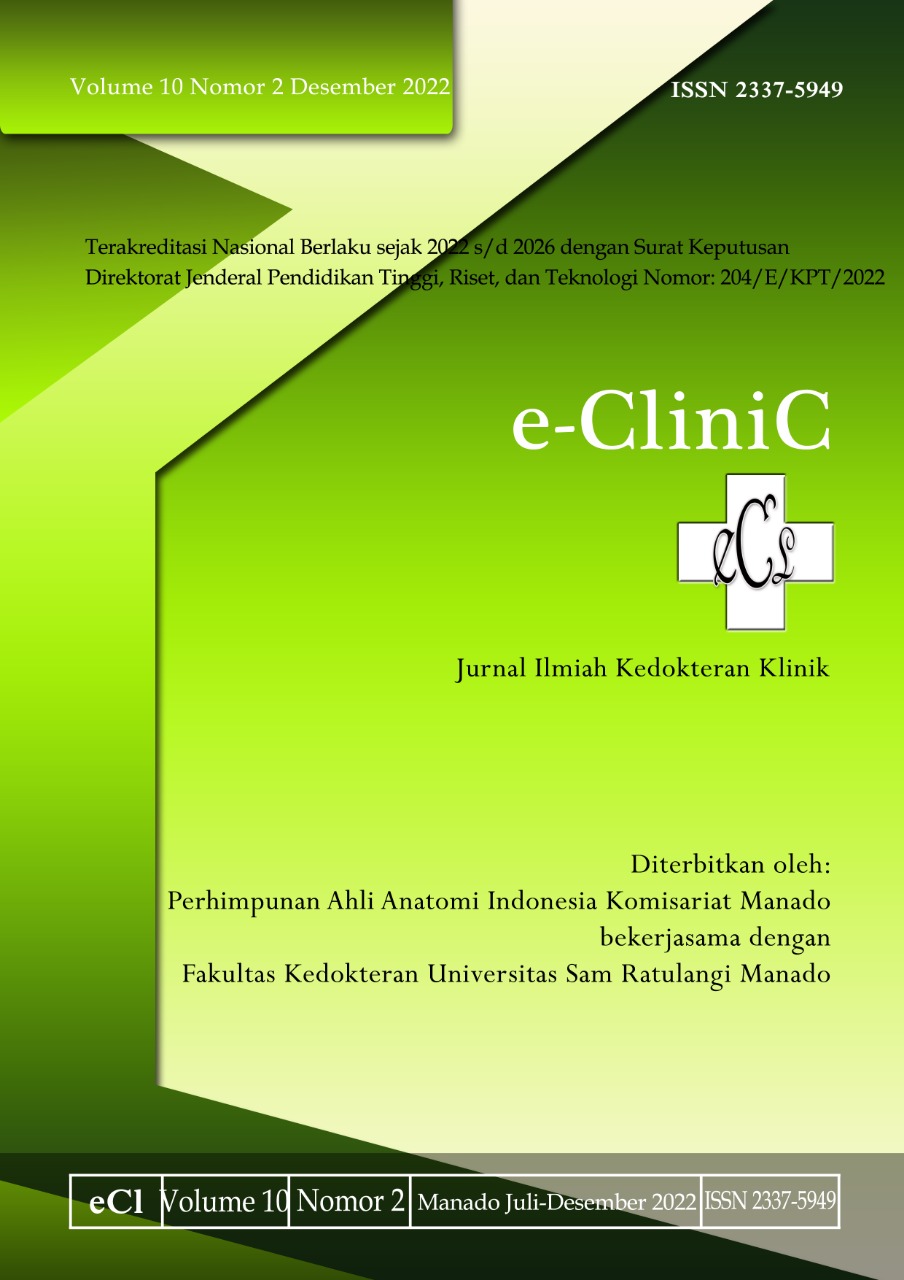Relationship between Level of Serum Fibronectin and Level of Consciousness according to Glasgow Coma Scale in Traumatic Brain Injury Patients
DOI:
https://doi.org/10.35790/ecl.v10i2.39168Abstract
Abstract: Traumatic brain injury (TBI) occurs worldwide causing death and serious disability. Adequate initial assessment of the level of consciousness with GCS and early intervention are critical components of managing a patient with TBI. Levels of fibronectin, especially c-Fn in patients with severe TBI, increase significantly over time for several days after the trauma and are associated with poorer disease prognosis. This study aimed to analyze the relationship between serum fibronectin level and the Glasgow coma scale in patients with TBI and serum fibronectin level as a predictive parameter of trauma severity in TBI. Plasma fibronectin levels were measured blindly using ELISA according to the ELISA kit instructions for fibronectin. There were 65 COT patients as samples. The majority of patients had mild to moderate COT, and only 10 (15%) patients were in the severe COT category (GCS 3-8). The distribution of serum fibronectin level was moderately skewed to the right with a median of 4 ng/ml (IQR 2.7-6.4 ng/ml). In conclusion, there is a negative relationship between serum fibronectin and GCS which could be used for COT stratification. Serum fibronectin levels tend to be high in patients with low GCS or severe COT. Fibronectin is also high in patients that did not survive.
Keywords: fibronectin; Glasgow coma scale; traumatic brain injury
 Â
Abstrak: Cedera otak traumatik (COT) banyak terjadi di seluruh dunia dan menyebabkan kematian dan disabilitas berat. Penilaian awal dengan Glasgow coma scale (GCS) dan intervensi yang dini merupakan komponen yang penting dalam menangani pasien. Kadar fibronektin khususnya c-Fn pada pasien dengan trauma kepala berat meningkat secara bermakna seiring waktu selama beberapa hari setelah trauma kepala dan berhubungan dengan prognosis penyakit yang lebih buruk. Penelitian ini bertujuan untuk menganalisis hubungan antara kadar serum fibronektin dengan GCS pada pasien COT dan kadar serum fibronektin sebagai parameter prediktif tingkat keparahan trauma. Kadar fibronektin plasma diukur secara blind menggunakan ELISA sesuai instruksi kit ELISA untuk fibronektin. Sampel penelitian berjumlah 65 orang pasien COT. Umumnya pasien mengalami COT ringan atau sedang, dan hanya 10 orang (15%) pasien berada pada kategori COT berat (GCS 3-8). Distribusi kadar serum fibronektin cukup miring ke kanan dengan median 4 ng/ml (IQR 2,7-6,4 ng/ml). Simpulan penelitian ini ialah terdapat hubungan negatif antara fibronektin serum dan GCS yang dapat digunakan untuk stratifikasi COT. Kadar serum fibronektin cenderung tinggi pada pasien dengan GCS rendah atau COT relatif berat. Fibronektin juga ditemukan tinggi pada pasien yang meninggal.
Kata kunci: fibronektin; Glasgow coma scale; cedera otak akibat trauma
Downloads
Additional Files
Published
How to Cite
Issue
Section
License
COPYRIGHT
Authors who publish with this journal agree to the following terms:
Authors hold their copyright and grant this journal the privilege of first publication, with the work simultaneously licensed under a Creative Commons Attribution License that permits others to impart the work with an acknowledgment of the work's origin and initial publication by this journal.
Authors can enter into separate or additional contractual arrangements for the non-exclusive distribution of the journal's published version of the work (for example, post it to an institutional repository or publish it in a book), with an acknowledgment of its underlying publication in this journal.
Authors are permitted and encouraged to post their work online (for example, in institutional repositories or on their website) as it can lead to productive exchanges, as well as earlier and greater citation of the published work (See The Effect of Open Access).







